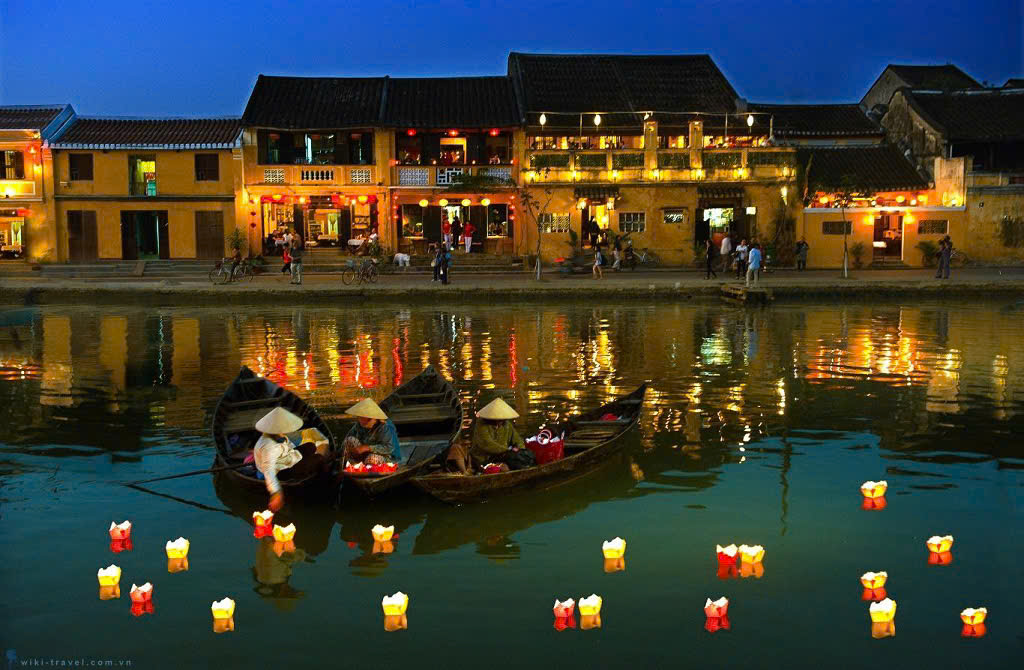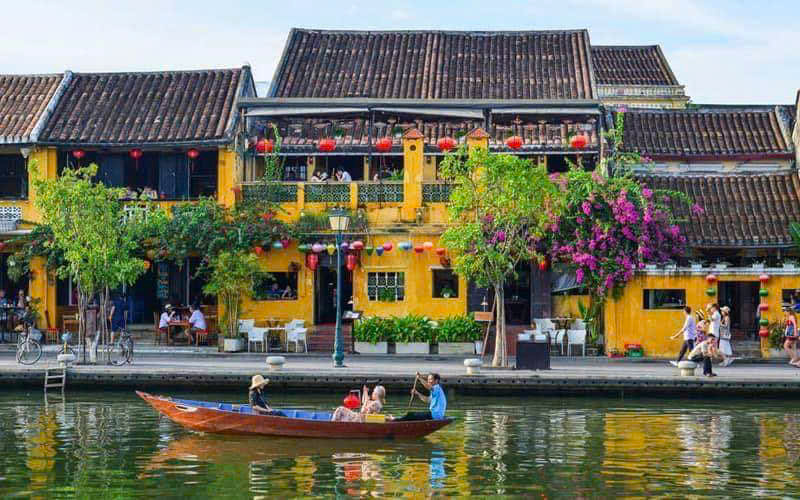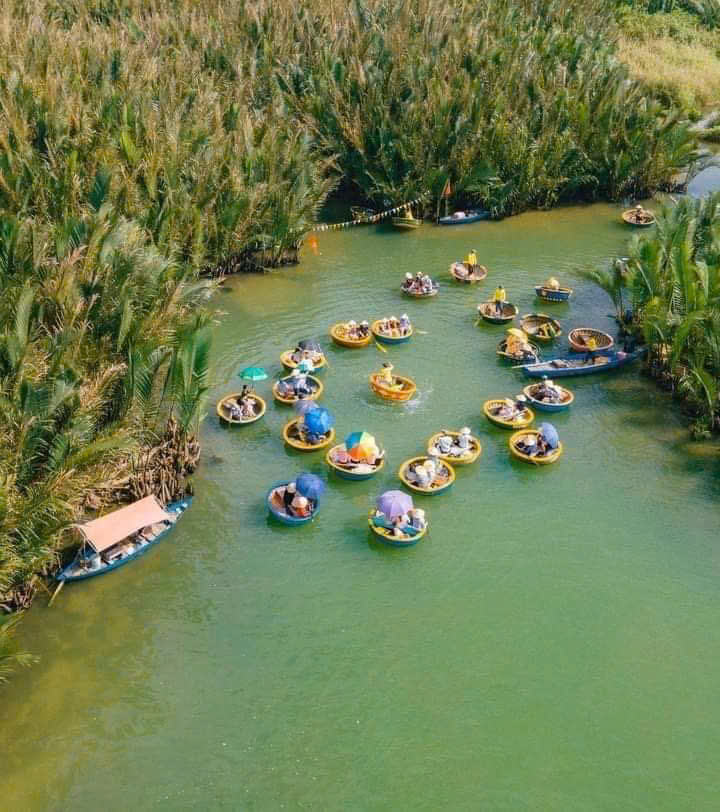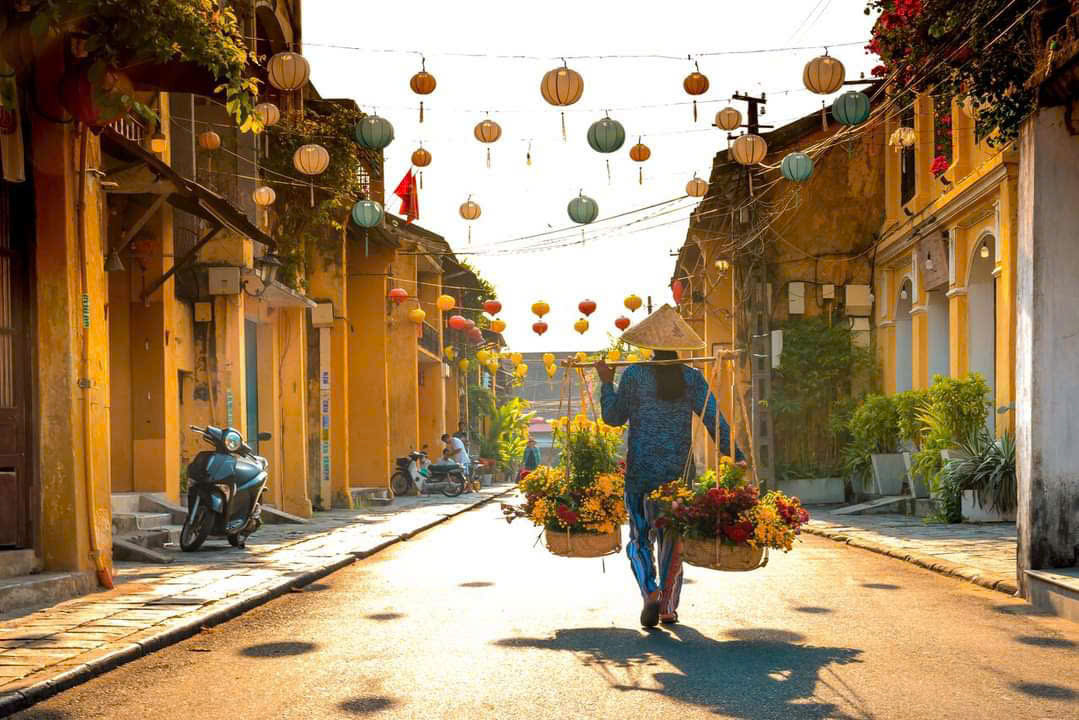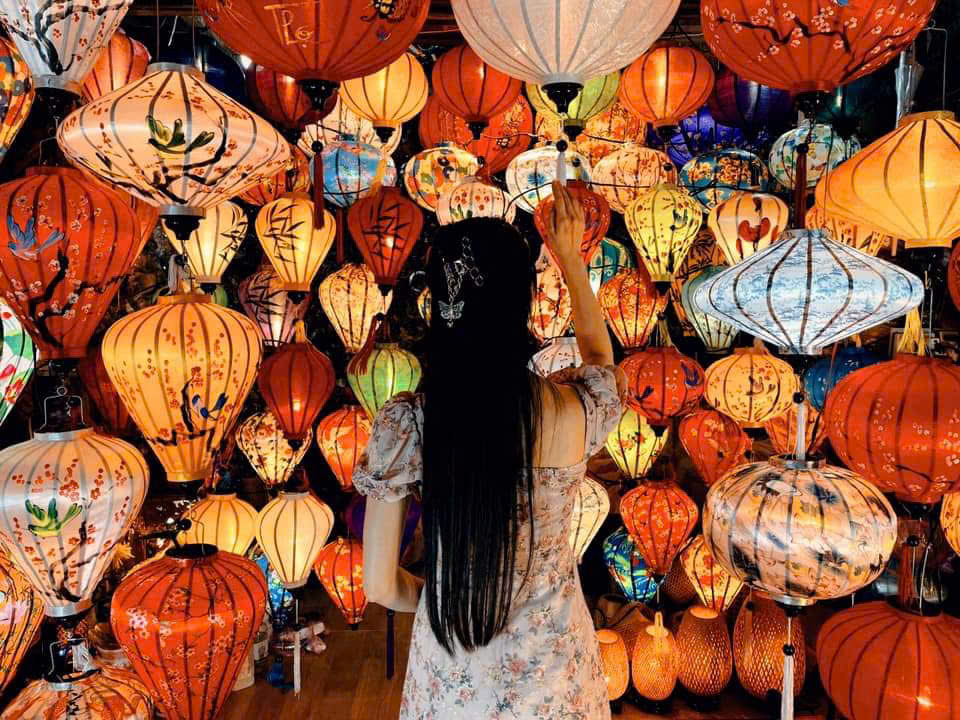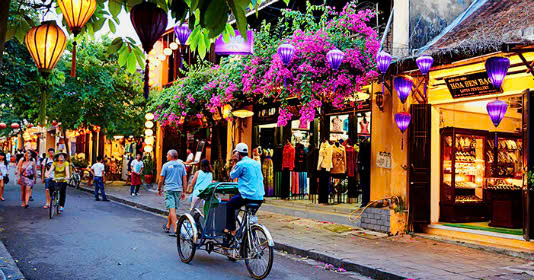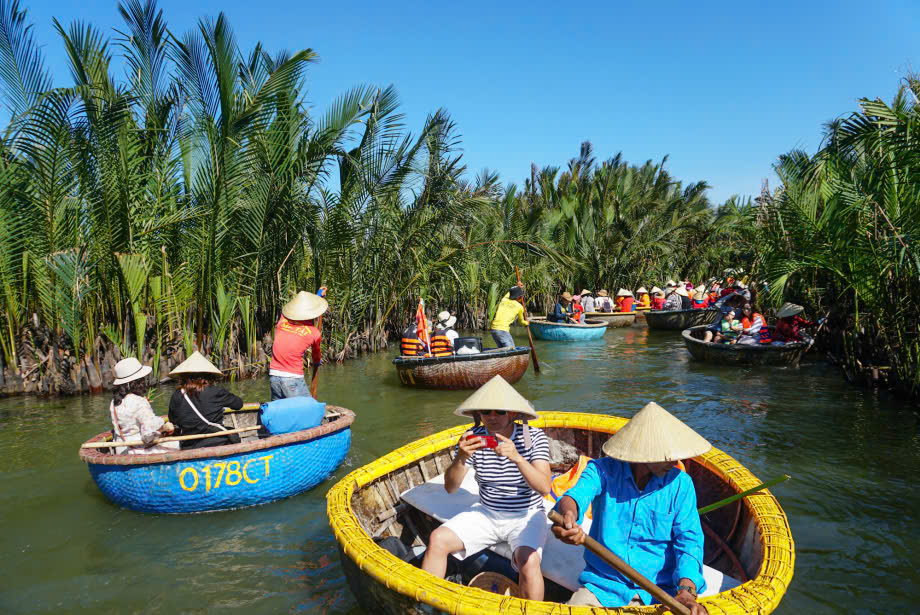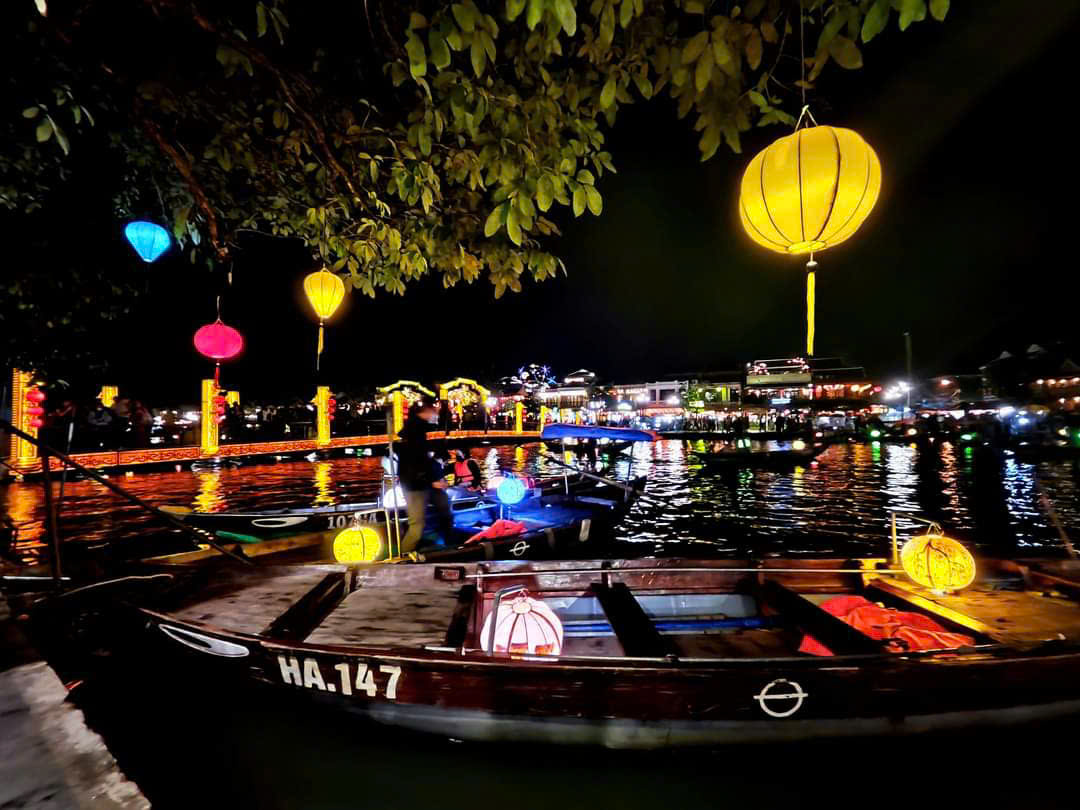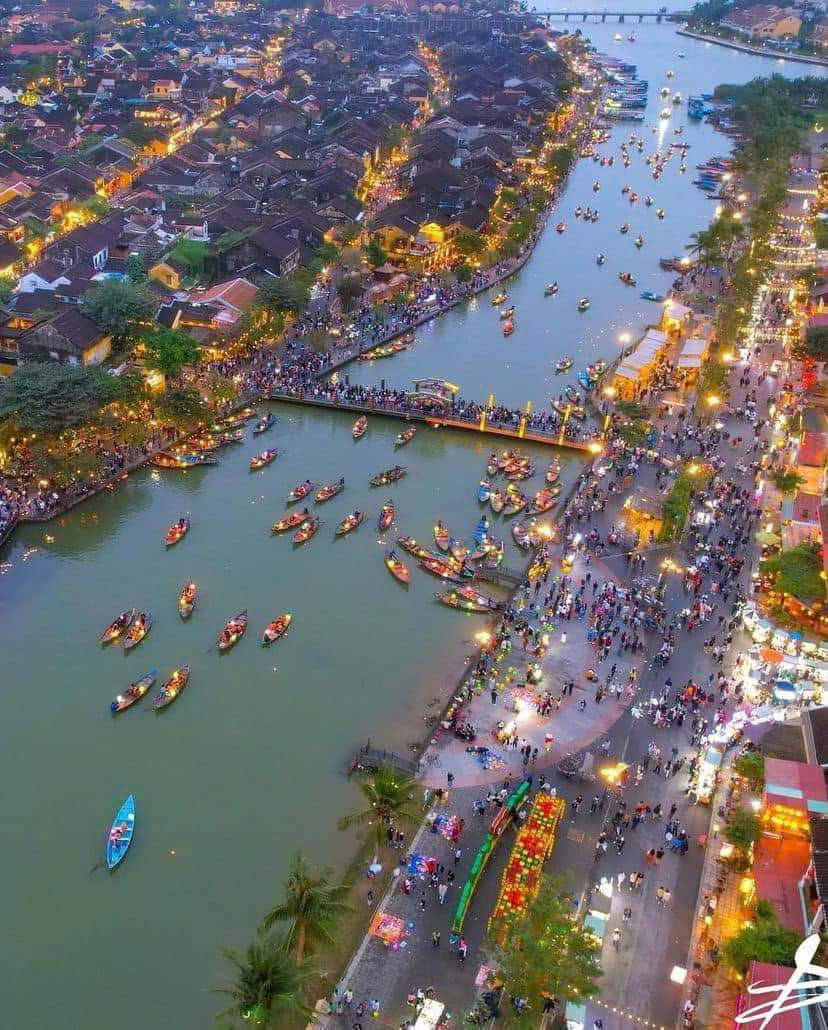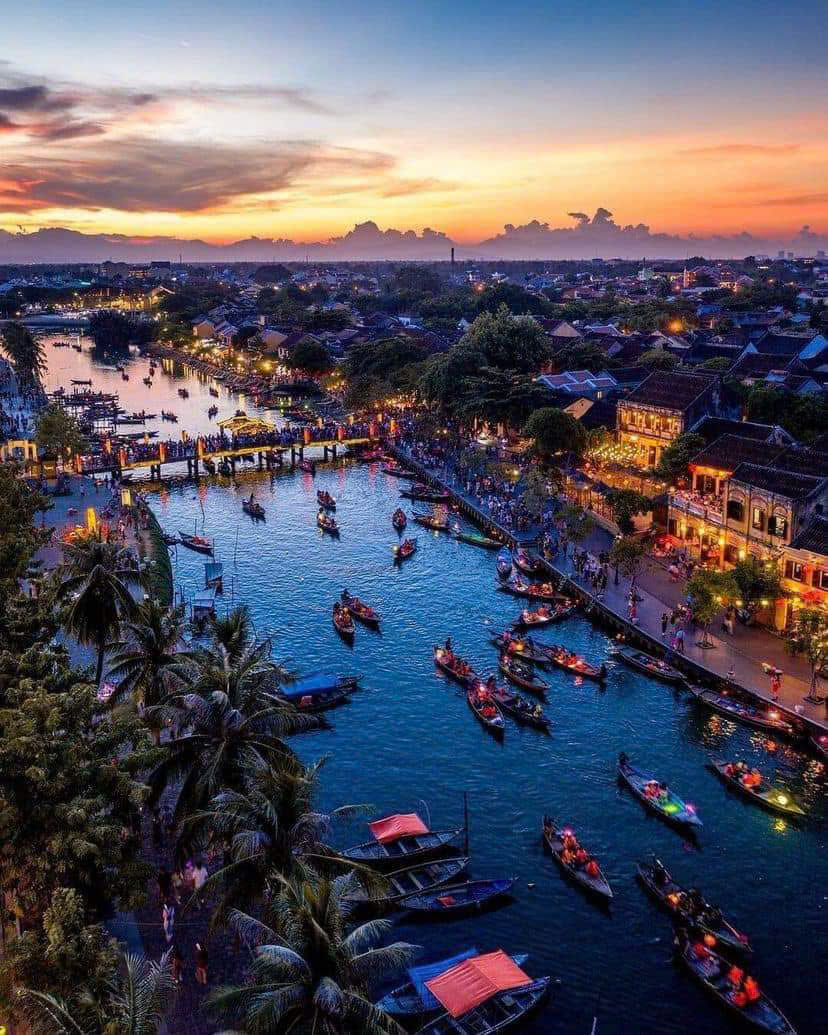This reputation of Hoi An comes from many factors. However, the three most special things may be architecture, food and tailor. Hoi An used to be an international commercial port, the meeting place of the merchant ships of Japan, China and the West during the 17th and 18th centuries, which affected a lot on its architecture. Hoi an’s architecture is a harmonious blend of Vietnamese, Chinese and Japanese design. It is a density of manypagodas, temples and ancient houses that bear its very unique mark, which makes it very special and unlike any other places in Vietnam. Some sites in Hoi antown which reflects the history of the period tourists shouldn’t miss are Japanese Covered Bridge, Phuc Kien Assembly Hall, Ong pagoda, Tan Ky old house, Phung Hung ancient house… Hoi An Viet Nam is considered a living museum of architecture and urban lifestyle.
The Cam Thanh Coconut Forest, about 5 kilometers from the well-known trading port of Hoi An, allows visitors to observe the simple life of a fishing community. A variety of gimmicks make the coconut boat ride to visit the Cam Thanh coconut forest more fascinating. The coconut boat performance, in which a paddler quickly turns the boat around while offering tourists a spectacular and exhilarating experience, is one of these. Visitors can also get free coconut leaf origami.
Hoi An boat ride is an experience that deserves a prominent spot on your bucket list, offering an extraordinary blend of tranquility, cultural immersion, and natural beauty.
The main highlight of the Hoi An Lantern Festival is the release of floating lanterns on the Thu Bon River. Visitors and locals purchase small lanterns, make a wish, and release them onto the river, creating a stunning visual spectacle as the lanterns float downstream. This act is believed to bring good luck and happiness.
| Depart | 12.50 PM from Hoi An | Finish | 6:30 PM at Hoi An |
| 12.00 PM from Da Nang | 7:30 PM at Da Nang |
Start your adventure with Cam Thanh Coconut for being a fisherman at Cam Thanh Coconut Village, you will experience about learning traditional fishing techniques and how to row unique Vietnamese bamboo basket boats while exploring the tranquil coconut palm waterways of the past war. On this tour, we provide authentic social and cultural insight into the local way of life in Vietnam. Furthermore, you will take part in some hands-on activities which are fun, safe, and interested are suitable for everybody.
- Go to the Phuc Kien Chinese Assembly Hall, a colorful mélange of bright gates, dragon statues, and elaborate rooftops. Get an introduction to ancestor worship while visiting the family altar and watching local devotees making offerings.
- You will see remarkably well-preserved old houses Phung Hung Ancient House or Tan Ky Ancient House that have withstood 200 years of weather and war. Learn about the prosperous merchants who used to live in these homes, trading with buyers from all around the world. Especially, you will enjoy art shows at Hoi An Traditional Performing Arts House.
- Make a stop at the Japanese Bridge. The bridge spans a small waterway and was constructed more than 400 years ago to connect the Japanese community with the Chinese who lived on the other side of the water. Admire the carvings and paintings inside the bridge, learning about their symbolism and cultural significance.
- Additionally, visit some of Hoi An’s well-known handicraft shops and artwork galleries. Discover smaller laneways and local neighborhoods, gaining a better appreciation of Hoi An’s endless charm.
- Dinner with Hoi An specialty food.
6.30 pm - Return to your hotel. End of our services!
TRIP INCLUDES
- Pick up & Drop off at your hotel
- English speaking tour guide
- Entrance fees.
- Basket Boat & boat ride – flower lantern
- Dinner with Hoi An local food (1 dish) (Chicken rice/ Cau Lau/ My Quang/…)
- Mineral water: 500ml/pax
TRIP EXCLUDES
- Personal expenses and Services not mentioned above.
- Tips & gratuities for guides and drivers

